Fish Stock
Wilson explains this fish stock recipe
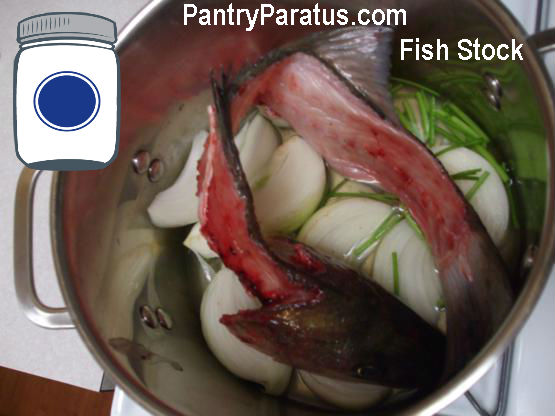
There may be a line to my thriftiness, like trying to recycle my own paper—I think that I will just leave that to the pros. However, as it turns out a lot of our ancestors really got along great with a lot less food waste (and nearly zero processed food) by using all of the animal or plant they were eating. “So, how do you make fish stock?” If you were to have asked me that ten years ago, I surely would have quipped with, “Why would you ever want to make fish stock?”
While there are detractors from the science of what Round Up® (glyphosphate) will or will not kill (albeit ever so slowly perhaps), one thing it is pressed into service to combat with great regularity are dandelions. These bright yellow reminders that nature is still pretty wild were actually harvested for food and wine production by my Italian ancestors.
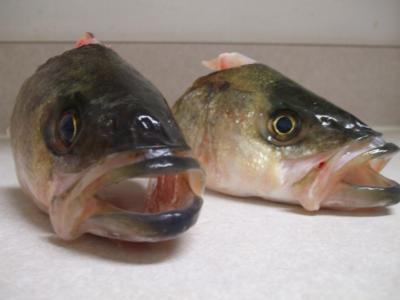
So when I learned that fish stock was really good for you and that it was made from the parts of the fish being thrown away after the filets were cut, I had to try it at least once. With all of the places that I could have turned to for a recipe for fish stock, I settled on two particular tried and trusted people. One was our buddy Ann Marie from CheeseSlave.com the other was a well worn copy of Nourishing Traditions by Sally Fallon Morell.
In Europe . . . the fish monger skins and filets the fish for you, giving you the filets of your evening meal and the bones for making the stock and final sauce. Unfortunately, in America sole arrives at the fish market preboned. But snapper, rock fish and other non-oily fish work equally well; and a good fish merchant will save the carcasses for you if you ask him. . . . Be sure to take the heads as well as the body—these are especially rich in iodine and fat-solulble vitamins” (Fallon & Enig, 1999)
Now I knew that Sally wrote extensively about soup stocks and fish stocks in particular, but I had not actually searched Ann Marie’s CheeseSlave website and I was pleasantly surprised to find this simple recipe. Below is my attempt at trying to recreate her fish stock recipe:
Ingredients
Onion, yellow or white, organic if possible (1)
Whole fresh, non-oily fish with the bones and fish heads and trimmings — cod, sole, halibut, haddock, whiting, halibut, flounder or snapper (2 pounds)
Parsley stems — not the leaves (6-8)
Lemon juice (1 tsp)
Sea salt (1/4 teaspoon)
Dry white wine (1 cup)
Enough filtered water to cover the ingredients by an inch
Optional: 1/4 cup fresh mushroom stems
Cut up the onion into rough chunks and put them in the stock pot. For even more flavor and body in your stock, I would recommend just cutting the onions skins and all. These onions had some mold under the surface, so I skinned them.
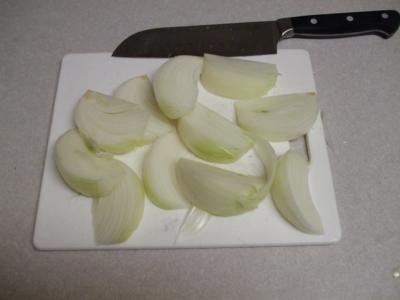
Divide the parsley stems and put them in the stock pot. I saved my tops for cooking later in the week.
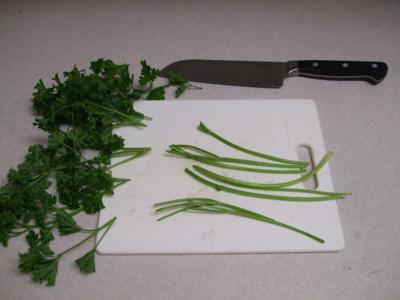
Measure the other ingredients and add them to the stock pot.
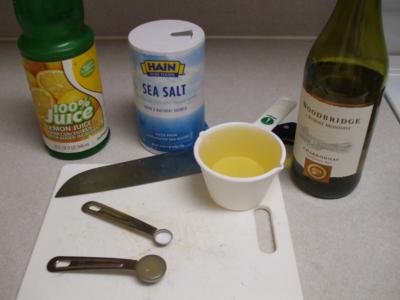
Wash the blood off of the carcass as much as possible, and add that to the stock pot. I did not use the skins (although I hear that you can do so).
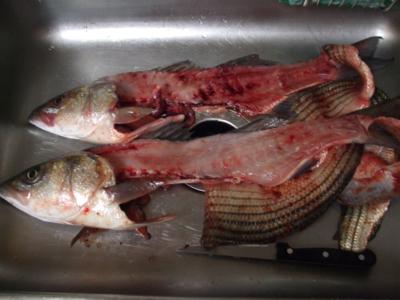
Be sure to remove the gills from the fish head, as this may bring a bitter flavor to your final product. This guy makes me nervous while using the knife, but this is a good demonstration:
Remove Gills from Fish — powered by ehow
Cover everything with water, about an inch should do nicely.
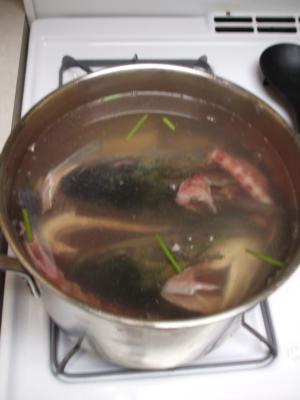
Bring to a boil. You will notice some scum on the surface—skim this off as much as you can (it need not be perfect).
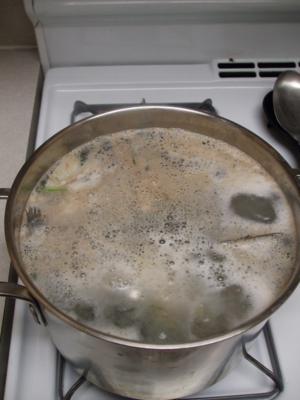
Reduce to a simmer for 4-24 hours depending on what you want it to look like.
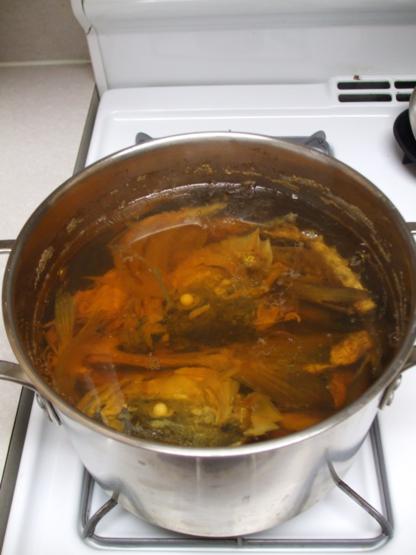
Strain the broth and the final product should look like this:
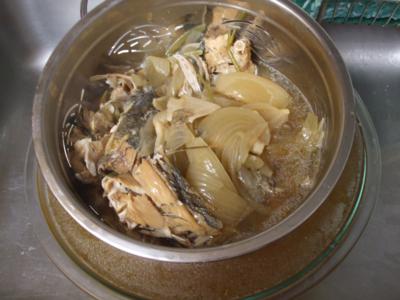
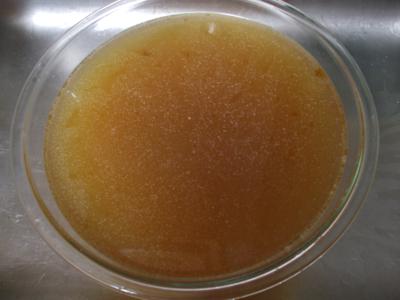
Divide it up into small containers to freeze it or Ann Marie has a great tip at using a (specially purposed) ice cube tray to have smaller portions at the ready for soups and such.
I know fish stock seems really gross to the American palate, but actually it is surprisingly tastey when you use it to make rice or soup. Leave a comment, let me know what you think!
Wilson
Pro Deo et Patria
Proviso:
Nothing in this blog constitutes medical advice. You should consult your own physician before making any dietary changes. Statements in this blog may or may not be congruent with current USDA or FDA guidance.
Works Cited:
Fallon, S., & Enig, M. G. (1999). Nourishing traditions, the cookbook that challenges politically correct nutrition and the diet dictocrats. (p. 119). New Trends Publishing.
Photo Credits:
All photos by Pantry Paratus

